41 reading food labels sugar content
Reading Food Labels | ADA - American Diabetes Association The Nutrition Facts labels on foods are really the key to making the best choices. We'll cover the basics so that these labels make shopping easier for you. Get started Understanding Carbs You've heard it all. From carb-free to low-carb, to whole and empty carbs, it's hard to know what it all means. Learn more Food & Blood Sugar How to Read Nutrition Labels: Fat Content, Carbs & What To Look For Total Fat. Nutrition labels are required to include total fat, saturated fat, and trans fat. The total amount of fat in the diet is a percentage of your calorie needs. The recommendation for the typical American diet is around 30%. For someone taking in 2,000 calories, this would mean around 70 grams of total fat per day.
› food › new-nutrition-facts-labelHow to Understand and Use the Nutrition Facts Label | FDA Single-Ingredient Sugar labels Packages and containers of products such as pure honey, pure maple syrup, or packages of pure sugar are not required to include a declaration of the number of grams...

Reading food labels sugar content
How to read food labels: MedlinePlus Medical Encyclopedia Always check the serving size first. All the information on the label is based on the serving size. Many packages contain more than 1 serving. For example, the serving size for spaghetti is most often 2 ounces (56 grams) uncooked, or 1 cup (0.24 liters) cooked. If you eat 2 cups (0.48 liters) at a meal, you are eating 2 servings. How to Read Nutrition Labels for Sugar - hekagoodfoods The number of grams of sugar. Keep in mind, one gram of sugar is roughly equivalent to 1/4 teaspoon of sugar. A percentage indicating how much of your recommended daily intake the item contains. While this is helpful to reference, the FDA recommends natural and added sugars account for no more than 10% of your daily caloric intake. › en › healthy-livingUnderstanding Ingredients on Food Labels | American Heart ... Mar 06, 2017 · There are many terms used for sugar on food labels. You might see sugar listed as the fourth ingredient in a product and think it’s not so bad. But sugar can also be listed as high-fructose corn syrup or corn syrup, agave nectar, barley malt syrup or dehydrated cane juice, to name just a few. Read more about sugar and sweeteners.
Reading food labels sugar content. Reading food labels: Tips if you have diabetes - Mayo Clinic Sugar-free foods may play a role in your diabetes diet, but remember that it's equally important to consider carbohydrates as well. A sugar-free label means that one serving has less than 0.5 grams of sugar. When you're choosing between standard products and their sugar-free counterparts, compare the food labels. › understanding-food-labelsUnderstanding food labels - Canada.ca Find information on food labels and how to understand them. Learn about nutrition facts tables, serving size, list of ingredients, % daily value and nutrition claims. How to Read Food Labels Without Being Tricked - Healthline Other added sugars: barley malt, molasses, cane juice crystals, lactose, corn sweetener, crystalline fructose, dextran, malt powder, ethyl maltol, fructose, fruit juice concentrate, galactose,... › how-to-read-food-labelsHow to read food labels | healthdirect Energy: A kilojoule is a measure of energy. To lose weight, you need to eat and drink fewer kilojoules (kJ) than you use. You should limit your intake of discretionary or junk foods — i.e. those that have more than 600kJ per serve.
Sugars on food labels - Sugar Nutrition Resource Centre The Nutrient Information Panel on the back of the pack, shows detailed information on the average amount of energy, protein, fat, saturated fat, carbohydrate, sugars and sodium (a component of salt) in the food, as well as any other claim that requires nutrition information. It shows this information in a serve and also in 100ml (liquid) or 100 ... How To Read Food labels for Sugar | My Sugar Free Kitchen On the label check the sugars in the nutrition panel. 5g/ml or less of sugar per 100g/ml = this would count as low sugar content. It means 5% of the ingredients are sugar; Between 5g/ml and 20g/ml of sugar per 100 grams = medium sugar content. With 20ml of sugar per 100 ml, this means the product is 20% sugar…not so good. Reading labels | Diabetes UK This will make sure you are counting both the complex (starchy) and simple (sugary) carbs in your food. Both will raise your blood glucose (blood sugar) levels, and need to be matched with insulin. In general, sugar-free options like diet drinks and jellies don't need to be counted. However, it's still worth checking the ingredients list because sometimes labelling is misleading. 'No added sugar' may still contain sugar. How to understand food labels | Eat For Health The Nutrition Information Panel on a food label offers the simplest and easiest way to choose foods with less saturated fat, salt (sodium), added sugars and kilojoules, and more fibre. It can also be used to decide how large one serve of a food group choice or discretionary food would be and whether it's worth the kilojoules.
Understanding food labels | Diabetes UK Check the ingredients list - if syrup, invert syrup, cane sugar, molasses or anything ending in 'ose' is within the first three ingredients, this suggests the food contains more added sugar. Choose an alternative if possible, or be mindful of the portion you eat. Check the fibre content on the back of pack label. If you're choosing between two similar products and one has more fibre, choose that, as we should all be consuming more fibre as part of our daily diet. How To Read Food and Beverage Labels - National Institute on Aging Most older adults exceed the recommended limits for saturated fats, sodium, and added sugars. Compare and choose foods to get less than 100% DV of these each day, making sure to adjust for how many calories are in your diet. Additionally, many older adults do not get the recommended amounts of dietary fiber, vitamin D, calcium, and potassium. Reading Food Labels | GI Foundation In Australia and New Zealand and other parts of the world, the term carbohydrate as listed on the nutrition information panel (NIP) only includes the starches and sugars in the food. It does not include fibre because fibre is not broken down during digestion. Therefore "total carbohydrate" includes the starches, sugars and fibre in the food. › sites › defaulthow to understand food labels - Eat For Health sugar: Dextrose, fructose, glucose, golden syrup, honey, maple syrup, sucrose, malt, maltose, lactose, brown sugar, caster sugar, maple syrup, raw sugar, sucrose. Fibre Not all labels include fibre. Choose breads and cereals with 3g or more per serve Nutrition Information Servings per package – 16 Serving size – 30g (2/3 cup) Per serve Per 100g
How to Read Food Labels and Understand Sugar Content - yum. Gluten Free The NIP on a label shows the amount of certain nutrients found in a stated amount of the product. These nutrients include energy, protein, fat (total and saturated), carbohydrate (total and sugars) and sodium. There may be further categories and/or subset of these categories, for example, 'sugars' is a subset of 'carbohydrates'.
Food Labels | CDC - Centers for Disease Control and Prevention If you eat the whole thing, you are eating 8 times the amount of calories, carbs, fat, etc., shown on the label. Total Carbohydrate shows you types of carbs in the food, including sugar and fiber. Choose foods with more fiber, vitamins, and minerals. Choose foods with lower calories, saturated fat, sodium, and added sugars. Avoid trans fat.
LABEL READING: CARBOHYDRATES AND SUGARS - Renaissance Nutrition Center ... At this point, you cannot tell how much sugar the manufacturer has added; when the food labels change in 2018, there will be a line named "added sugars." One teaspoon of sugar or sugar equivalent is 4 grams of sugar, 16 calories. Products we call sugars are often included in Total Carbohydrates, but not in the Sugars listings.
How to read labels for added sugar - That Sugar Movement Technically, 4.2g = 1 teaspoon of sugar, but for the easy on-the-spot calculation, just remember 4g equals one teaspoon. For example, a 375ml can of Coca-Cola is about 40g of sugar. Dividing that by 4 means there are 10 teaspoons of added sugar in the one can.
Sugar labelling - Food Standards The Code contains requirements for foods that make claims about sugar. For example, foods that claim to be 'low sugar' cannot contain more than 2.5 g of sugar per 100 mL of liquid food or 5g per 100g of solid food. There are also requirements for claims such as 'reduced sugar', 'x% sugar free', 'no added sugar' and 'unsweetened'.
Understanding food labels fact sheet - NDSS Understanding how to read food labels can help you choose foods with more fibre and less saturated fat, salt (sodium), added sugars and kilojoules. Food labels will typically include a nutrition information panel, list of ingredients, the 'use by' or 'best before' date and identify potential food allergens and additives. Food labels ...
Sugar Savvy: How To Read Food Labels - Elsa Jones < 5g of sugar per 100g = low sugar content. 5g - 15g sugar per 100g = medium sugar content >15g of sugar per 100g = high sugar content . Note Re. Naturally Occurring Sugars. If you're trying to calculate sugar content on a food label, it's important to bear in mind that in many cases, not all of what you see is 'added sugar'.
Food labels - NHS Amber means neither high nor low, so you can eat foods with all or mostly amber on the label most of the time. But any red on the label means the food is high in fat, saturated fat, salt or sugars, and these are the foods we should cut down on. Try to eat these foods less often and in small amounts. Ingredients list
Understanding food labels - Diabetes Ireland Looking at the label can also help you decide whether the product contains 'a little' or 'a lot' of fat, sugar, salt, and fibre. If the quantities fall between the 'a little' or 'a lot' then food contains a moderate amount. How to calculate salt **Remember salt contains sodium but sodium content is not the same as salt content.
Learning To Read Labels :: Diabetes Education Online On a nutrition food label, subtract the fiber from the total carbohydrate amount. When you read food labels, the grams of sugar are already included in the total carbohydrate amount, so you do not need to count this sugar amount separately. The grams of sugar listed include both natural sugars, from fruit or milk, and added sugars.
This Is How to Read a Nutrition Facts Label on the Keto Diet That's not a 33% fat, 33% carb, 33% protein ratio. It's actually 52% fat, 24% carb, 24% protein. This may sound a little confusing, but as long as you limit carbs (the most important part) and aim for healthy fats and protein to make up a majority of your daily macronutrient intake, your results should be excellent.
diabetes.org › making-sense-food-labelsMaking Sense of Food Labels | ADA - American Diabetes Association One of the three types of carbohydrates in food is sugar. As of January 2021, labels must include added sugar to help you know the difference between sugar that occurs naturally in the food (like yogurt or fruit) and sugar that was added during processing (like in cookies, candy and soda). Many labels have already made the change.
How to Identify Sugar on Nutrition Labels | Days To Fitness Step 3 - Compare the sugar content of similar food products. A very effective way to see how much sugar is in the food you are eating is to compare product labels side by side. For example, take a no-added-sugar cereal and a regular breakfast cereal and compare total sugar per same-sized serving. You'll often be surprised at the difference.
Understanding sugar content on food labels - Diabetes Care Community On a food label, the total amount of carbohydrate in grams is listed first. This number includes starch, sugars and fibre. Fibre does not raise blood sugar levels and should be subtracted from the total carbohydrate. Say, for example, one serving of food contains 36 grams of carbohydrate, which includes 6 grams of fibre.
Added Sugars on the New Nutrition Facts Label | FDA - U.S. Food and ... Let the Nutrition Facts Label Be Your Guide The new Nutrition Facts label can help you compare and choose foods that are lower in added sugars. Check the label to see if foods are LOW or HIGH in...
› atoz › contentYour Guide to the New Food Label | National Kidney Foundation The Nutrition Facts Label helps you understand the nutrients a food product contains, and the Nutrition Facts Table lists all the items required by the law. Food labels have percent daily values listed for a set group of nutrients based on the Food and Drug Administration (FDA) recommended 2000 calorie diet.
› en › healthy-livingUnderstanding Ingredients on Food Labels | American Heart ... Mar 06, 2017 · There are many terms used for sugar on food labels. You might see sugar listed as the fourth ingredient in a product and think it’s not so bad. But sugar can also be listed as high-fructose corn syrup or corn syrup, agave nectar, barley malt syrup or dehydrated cane juice, to name just a few. Read more about sugar and sweeteners.
How to Read Nutrition Labels for Sugar - hekagoodfoods The number of grams of sugar. Keep in mind, one gram of sugar is roughly equivalent to 1/4 teaspoon of sugar. A percentage indicating how much of your recommended daily intake the item contains. While this is helpful to reference, the FDA recommends natural and added sugars account for no more than 10% of your daily caloric intake.
How to read food labels: MedlinePlus Medical Encyclopedia Always check the serving size first. All the information on the label is based on the serving size. Many packages contain more than 1 serving. For example, the serving size for spaghetti is most often 2 ounces (56 grams) uncooked, or 1 cup (0.24 liters) cooked. If you eat 2 cups (0.48 liters) at a meal, you are eating 2 servings.
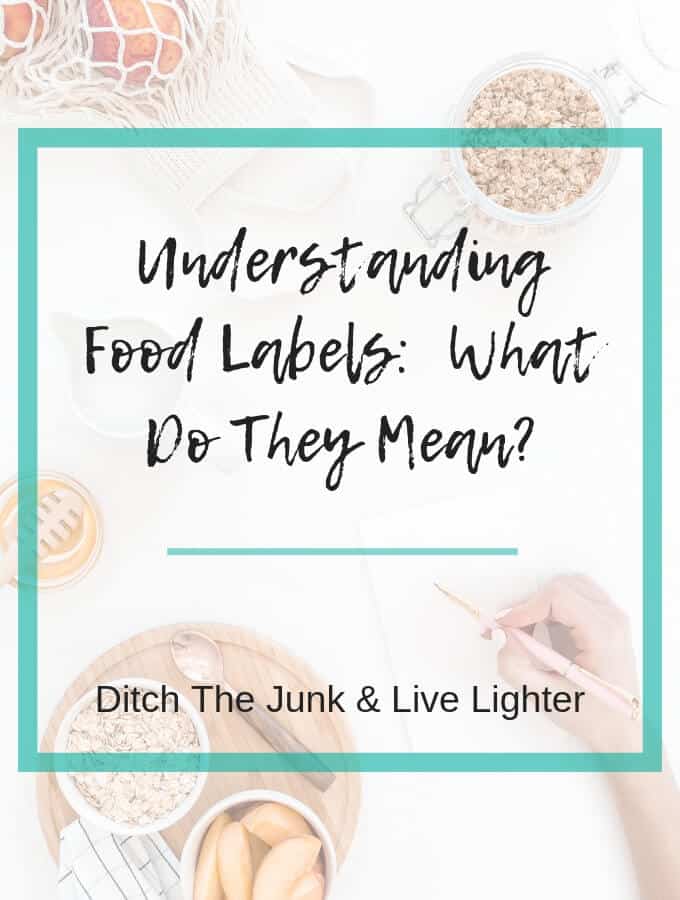





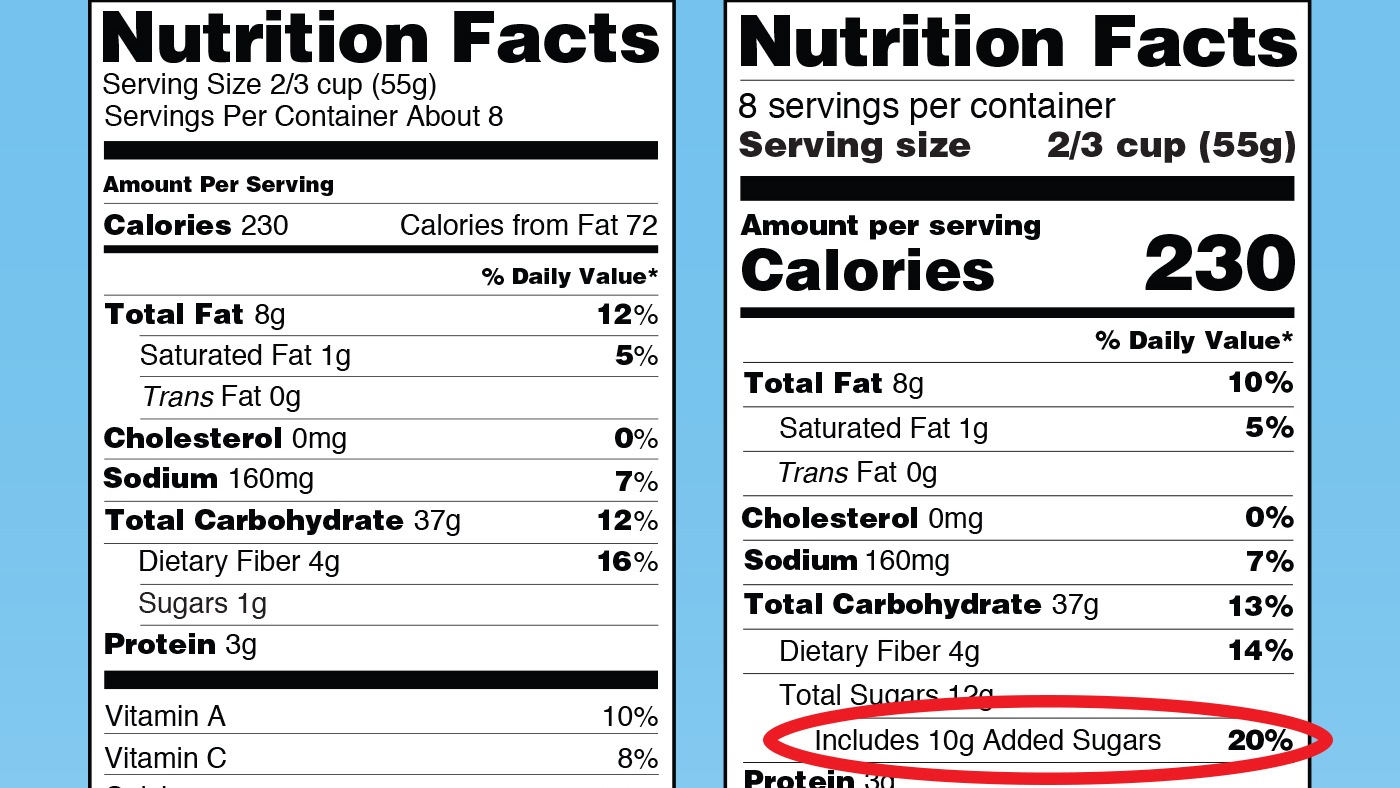




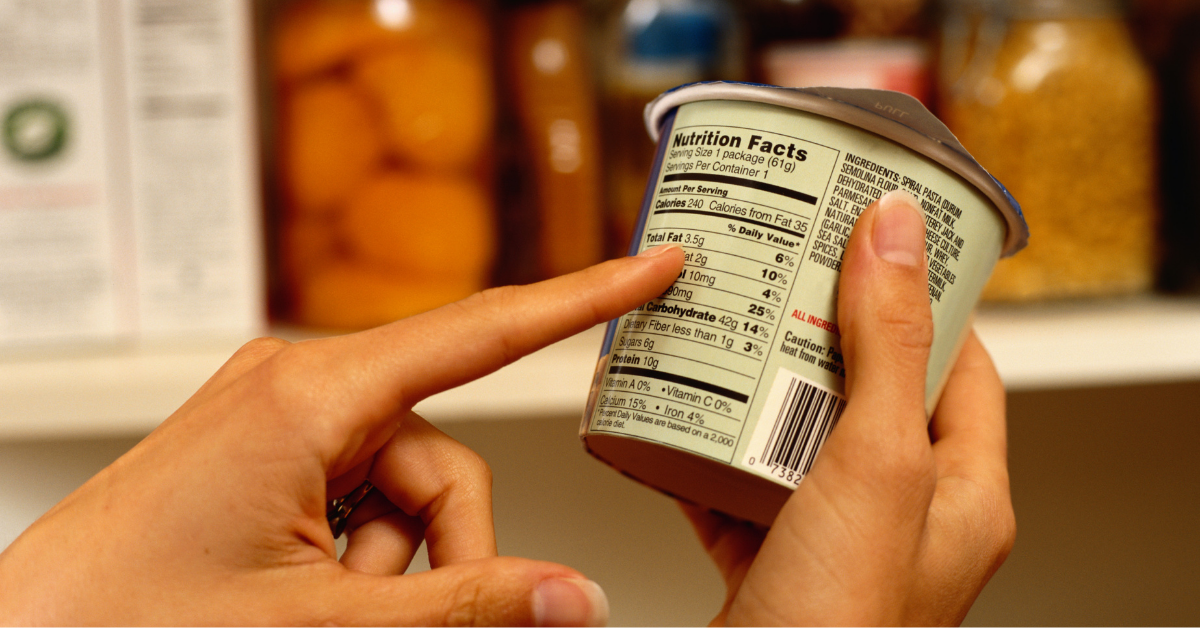

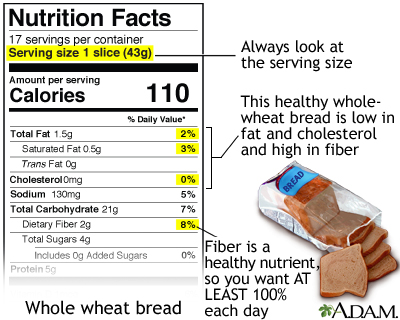

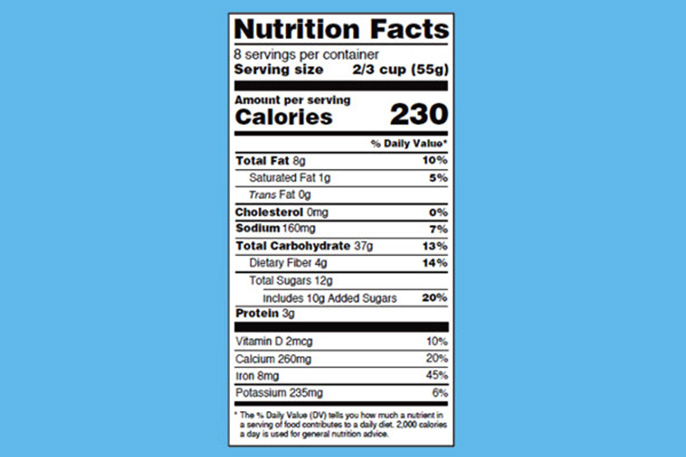
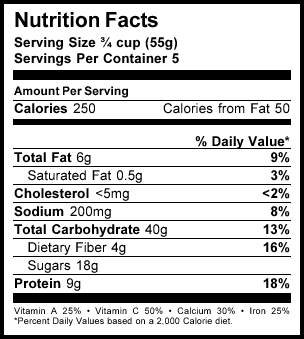





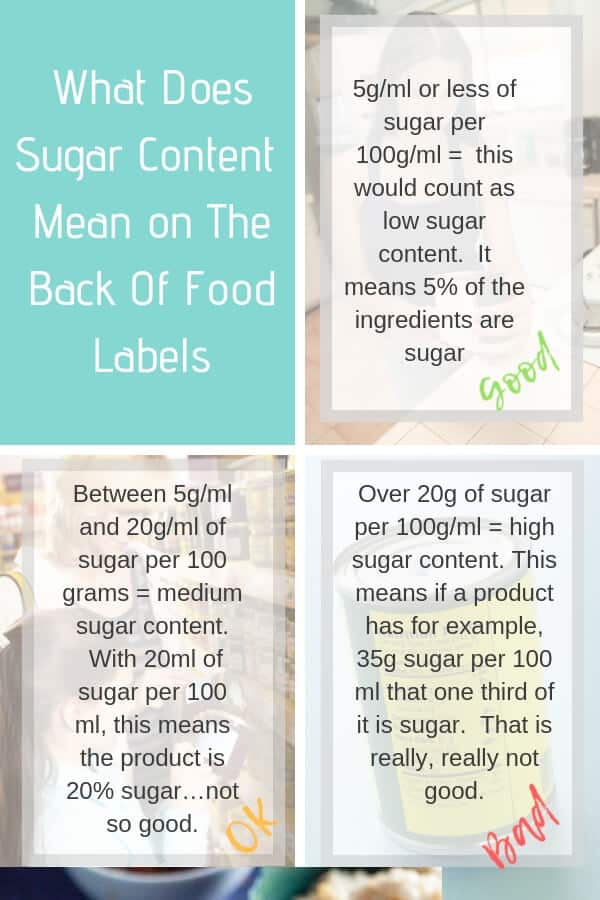

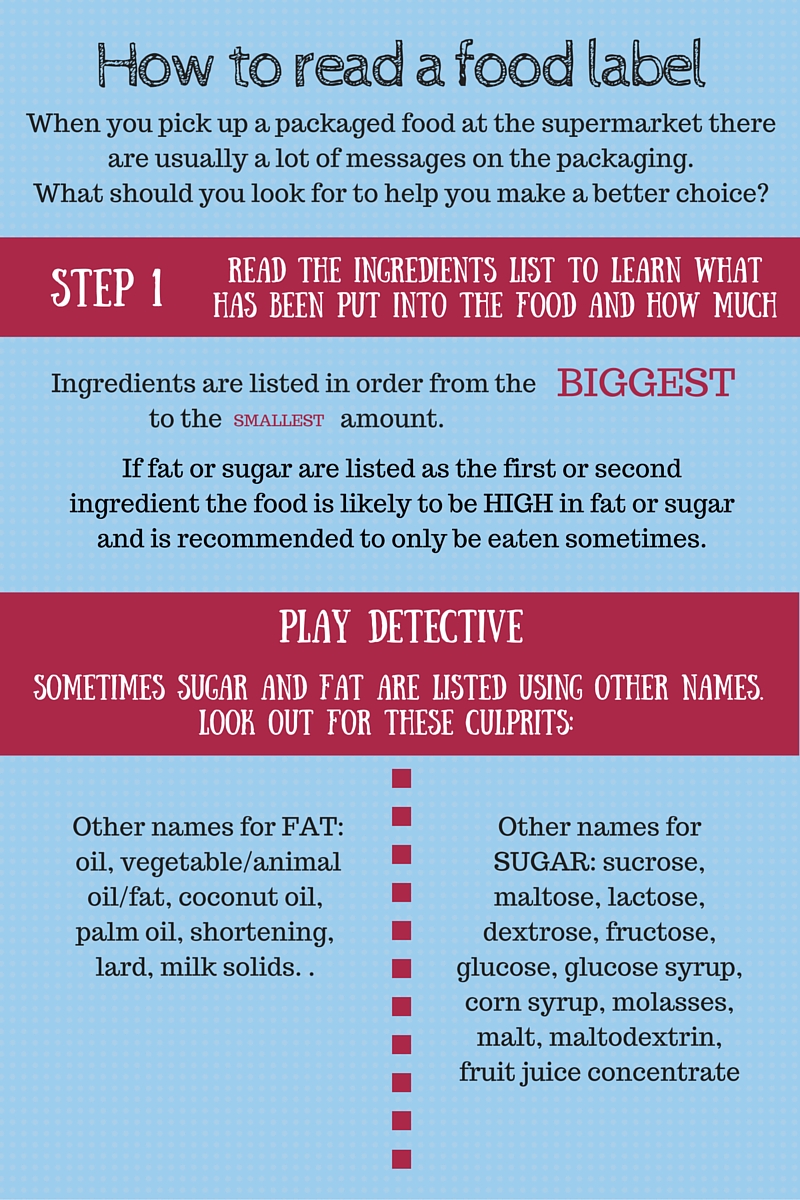


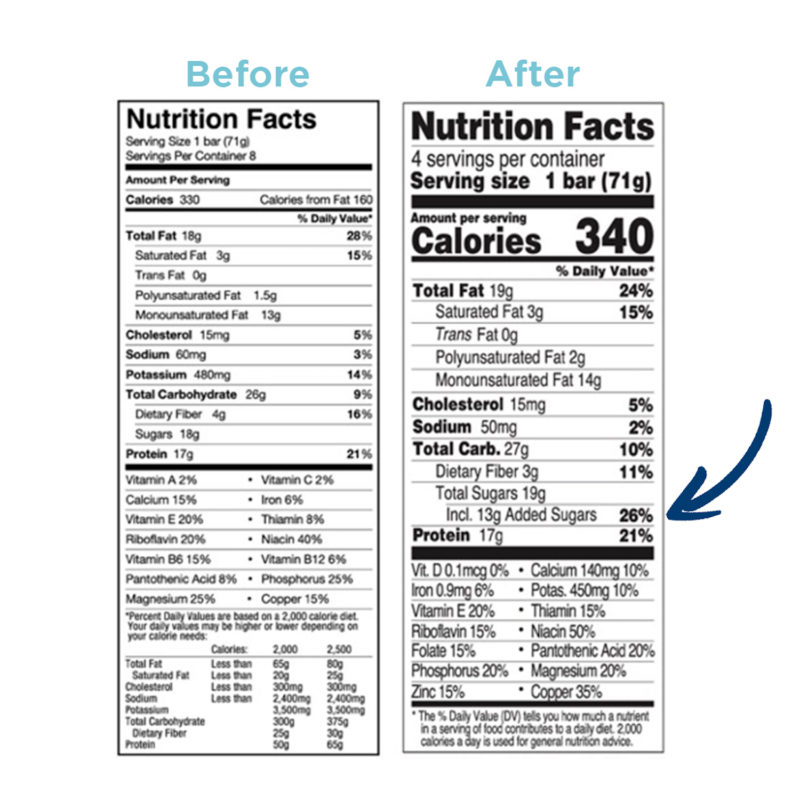



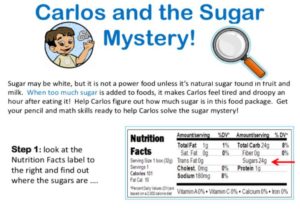



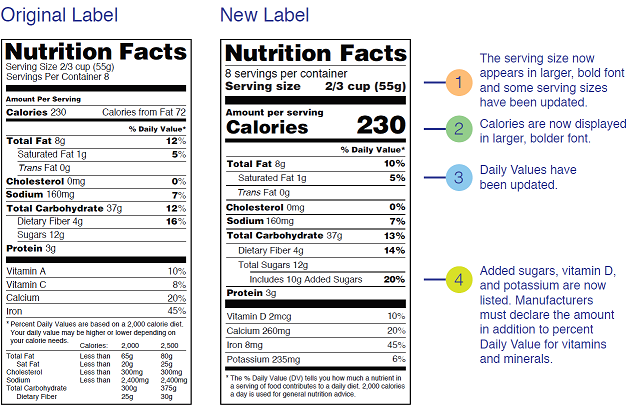
Post a Comment for "41 reading food labels sugar content"